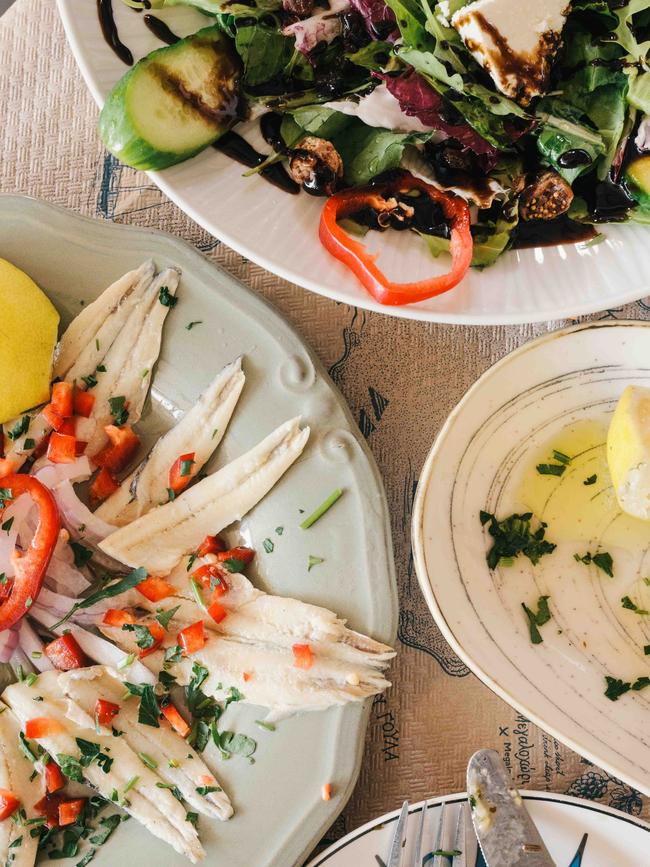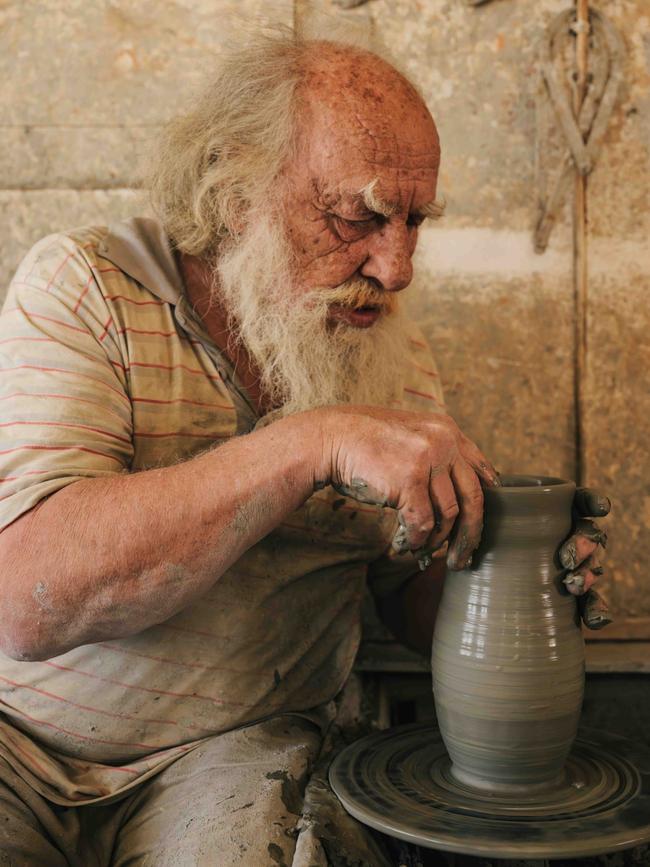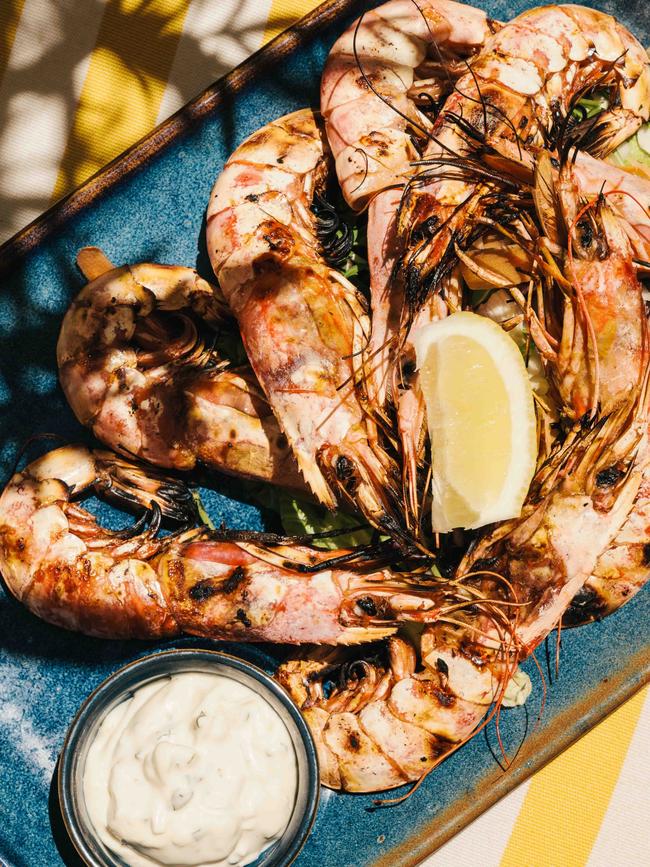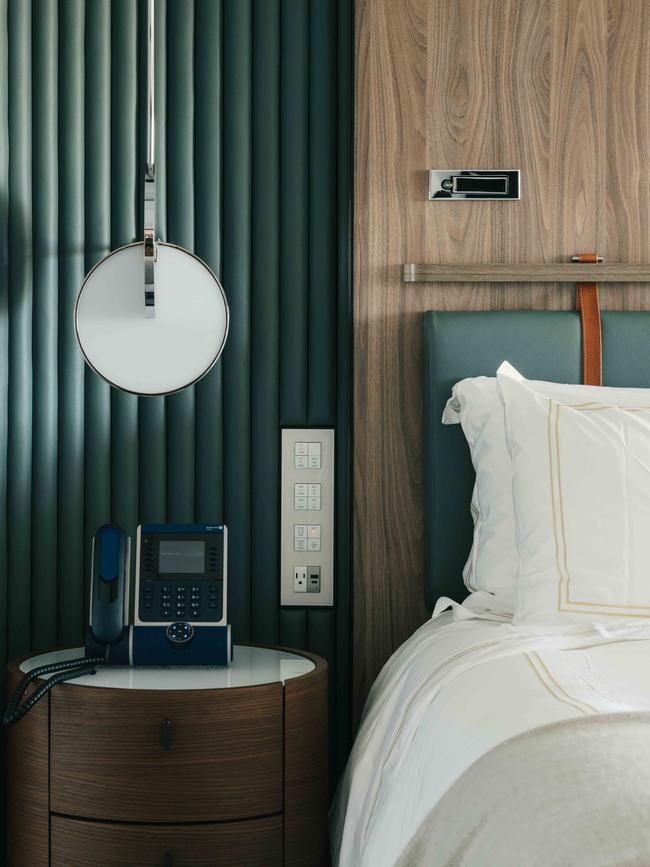A super-luxe Med cruise that takes you from the Aegean to the Adriatic
Cultural riches, culinary highs and revelatory moments abound on a sailing from Istanbul to Trieste on Oceania’s sumptuous new ship.
At dawn, the port of Galata in Istanbul is marked by empty alleys, shuttered cafés and slumbering cats. “I’m off to sea,” I tell the slender tabby who sits by my suitcase at the foot of Oceania Vista as we both squint into the pale morning sun. From the ground, the most recently launched vessel in the Oceania fleet stands like an Art Deco apartment building with 612 ocean-facing staterooms and 16 decks, its glittering blue windows bouncing light off the water. It was good to arrive early, to prowl the length of the port and admire the ship’s lines from the upper tiers of Istanbul Modern, the gallery on the banks of the Bosphorus that reopened last year in an airy Renzo Piano-designed building.
Boarding is brisk, and by 11am I’m brunching with a panoramic view over the crests of starched linens in Aquamar Kitchen. Moored for the night, this is technically day one of an itinerary that begins at the edge of the Aegean in Turkey and ends in the pearl of the Adriatic, Trieste, in Italy. The buzz aboard the new craft is palpable: velvet couches are plumped, the expansive art collection pulses with colour and the 800 crew are agile. Vista refines the concept of a small luxury cruise ship, yet everywhere is a sense of generosity and scale. Entering the triple-height reception area, the first impression is one of opulence. Gazing out into a limitless seam of water and sky from the top deck, my eye hovers like a gull. Ship or shore? The question comes up early but the siesta can wait. Byzantium beckons.
A 20-minute taxi ride later, I’m standing on an upper balcony of the Hagia Sophia, leaning into a cool stone column as the intonations of the Koran rise into the vaulted frescoes and highest windows. On the cusp of high summer, I had expected hordes, but only a quiet handful stood on the tiled floor, swollen with age. Immersive travel means jumping right in and being there, rental head scarf and all. That morning the port served as a portal, threading the sheen of the water in my pale grey stateroom to the dusty light of incense rising inside the domes. So far, so etheric.


-


This was a pinch-me moment that I was expecting many days deeper into the adventure, with the clouds of jetlag parting and espadrilles worn in. Rousing an appetite to visit a new city each day you must learn to eat dessert first, dried rose petals and all. Istanbul’s spice bazaar was just as I remembered it: pure perfumed chaos. How joyous to share a dish of quince and clotted cream with a strong black coffee in the blue-tiled heart of Pandeli restaurant, then choose a flacon of pure white oud fragrance to wear to dinner that night.
Red Ginger is a beloved eatery for Oceania that has been reimagined for Vista with full Hollywood Regency gloss. This is the place to wear a shantung shrug, wielding chopsticks ritually presented in a ceremonial lacquered box. “The miso-glazed sea bass will be your favourite,” promises Olga, my spirited server, and she is right. Over the course of 10 days, I nip back twice to enjoy the bespoke Rosenthal china and Olga’s dancing steps across the octagonal travertine tiles. Red Ginger does not shy from chilli or avant-garde plating. The lobster and avocado salad stands like a proud little pagoda – a spectacle so distracting I almost forget to notice there is a blood moon rising over the Turkish Straits en route to Izmir.
Entering the Aegean set us mid-stream in the terrain of mythology, emperors and roaring trade routes. Hungry for dust I chose an excursion both far-flung and rewarding. A less fêted attraction than Ephesus, Sardis bears the solitude of depthless age. Walking through the remains of a stone chapel and a temple dedicated to Artemis, we meet two Harvard pre-grads bouncing on the back of a farmer’s flat-bed truck on their way to help excavate and repair the floors in the vast synagogue nearby. Only discovered in 1962, the largest Jewish temple in the Roman world is carpeted with fragile monochrome mosaics and is a (little-known) revelation still in the process of repair. Gingerly, we step around volunteers and archaeologists, with nothing but the sound of the wind and chisels to break the silence.
Archaic places are a strange breed of pleasure. Standing in a ruin, you have to re-populate a completely abstract space with teeming life in your head. It’s a stretch. But approaching Santorini from the sea it could be any time starting with the Bronze Age. No matter how long the prow, slicing through water feels stealthy. On this voyage the greatest intimacy with the past is the ability to sail in and moor rather than fly and face a counter. From a distance the white houses on the ridgetop of ancient Thera sat like the beads of a bleached coral necklace on the nape of a vast sleeping stone lion. This was not the view, but it was a great one.


-


There are still bohemians on Santorini but you have to cross the island to Megalochori to find them. Choma Kai Nero (earth and water) Art Pottery Studio is the workshop, home and gallery of Andreas Makaris, a fifth-generation ceramic master originally from Athens. On the wall behind his potter’s wheel is a ragged guide to Greek amphorae and in his hands is something else, a creation equal parts Classical and Cubist. The oenochoe is a terracotta wine jug whose lines go back to pre-historic times, but from the spattered wheel of Makaris, the humble vessel assumes a sculptural force. In homage to the Cyclades I choose a blue one.
After sharing a thimble of 100-proof tsipouro, the maestro holds both my hands and stares into my very core through a plume of cigarette smoke. His eyes are the colour of the porcelain sky above Santorini and a blue-domed church where I later shelter from the sun. How sweet it is to be inside the view that everyone is fighting to photograph. The apse of St John the Baptist Cathedral is adorned with pale gold rays and hand-painted doves. Rebuilt and restored in the decades after the catastrophic earthquake of 1956, this space awakens a peace that feels centuries deep. Is it possible to be reborn on the third day of a cruise? Perhaps. Twenty minutes later I am comically late, riding a stoic donkey down the cliffs of the famous 600 steps connecting the town to the port, laughing, screaming – mainly screaming.
What is the line between tourist and traveller? Saturated in unpredictable beauty, it doesn’t much matter. All the postcard moments, when strung together, become indelible. No doubt each port is chosen for its spectacular minaret, medieval castle or cove. When I think I’ve reached full saturation, another pinnacle lands. The gelato infused with crunchy baklava at a Corfu lookout is one, hearing an opera rehearsal echoing through an Art Nouveau square in Ljubljana is another. Gathered in mostly smaller groups, Vista’s shore excursions are smartly curated and thoughtfully inclusive for those with access challenges. The opposite of “stop and shoot” touring, I find the magic mostly happens with people, more than landmarks. In Kefalonia, I meet a novice nun in the mountain hermitage of Agios Andreas. Just 20, she moves among the jewelled icons with a knowing poise. Wondering what it’s like to commit to the cloth, I ask her, “Is this like university for the soul?” With a shy smile, she nods, yes.


-


Travelling on water, the changes are more subliminal, like the way the forests seem to darken into viridian green the deeper we venture into Central Europe, then brighten to a clear shade of emerald as we graze the Italian border in Slovenia. In Kotor, Montenegro, I find Cattaro, a boutique dedicated to moggies of all stripes. Stepping into a square straight out of a Grimm fairytale, I note that every doorway features a bowl of water, kibble and a cat-flap, adding warmth to this medieval old town sheltered by granite mountains and inky pines.
The honeyed stone streets of Hvar have a glamour heightened by the trusty wooden craft that circled the Paklinski archipelago and deposited us at the isle of Sveti Klement. At the cherry-red café of the Meneghello Palmizana Art Hotel, I was given coffee by the daughter of Dagmar Meneghello, a smiling and proud third-generation scion of relaxed cultural tourism. With dogs at her ankles and Dagmar’s art collection all over the walls, she invites me to walk to the water’s edge and jump in. “The Adriatic is so clear, you might find a bit of treasure. My father’s collection of Roman relics are all from these waters!” Of all the stone beach paradises in the Paklinski islands, this is the one place I want to stow away.
How naive. It swiftly becomes apparent that other, far more-seasoned cruisers rarely go ashore at all. The decadence! For New Jersey native Don Bozzone – The Don to his friends – this is his 45th cruise with Oceania, with plans for another two later this year. “In the ’60s it was the Bahamas and one dining room and now this,” he tells me. The retired athletics coach, who packed a tailored sports jacket for all 12 restaurants, uses his time on board to work on his memoir. At moonrise we try cocktails including Blue Eyes Sinatra and Lady Hepburn at Martinis bar, before dining at his truly, deeply Italian haunt, Toscana. Don waves a pinky-ringed finger mid-air. “I could have bought a string of houses for retirement, but why? This is living and they treat me like a prince!” Capisco. I get it.
After a string of afternoon teas with the chamber quartet in Horizons bar, I begin burrowing into the plush surrounds like a silkworm. Vista represents an occasion as much as a ship. In the grand dining room, people really do dress for breakfast, like the girl in a pink tutu who runs blazing past a lady in a black sequinned beret. Meanwhile, a steady hum of butlers, chefs and waiters keep score on 1200 guests’ esoteric preferences, allergies and whims. If any social tribes are formed, they are all based on food. The baguette bakers below deck are my people. When I find out that chef and culinary director Alexis Quaretti, a veteran of Michelin-starred restaurants, has the butter and flour freshly imported from France to the ship’s boulangerie kitchen, I want to kiss him on both cheeks. For others the truffle mac and cheese and Amalfi limone pasta taste like home. “Get the osso buco alla Milanese,” Don tells me with a wink. “Nothing else matters.”


-


Apparently there is a pulsing nightlife on board, replete with full-scale musicals, Dom Pérignon private banquets and mic-dropping teenage Swifties on karaoke. Oh, well. I missed all that in favour of the dawns. On the second-to-last cruise day, we slide through the water on the approach to Dubrovnik as the sun peels darkness away from the mountains. What began as a quick stroll in my robe becomes a celebration, sipping iced Champagne in bare feet almost all the way to the city walls. There is no escaping the throng in Europe’s most overtouristed city, but you will still find the art and civic museums empty, and ravishing. Dubrovnik is a lot like walking into a children’s pop-up book. From the inside the archways and alleys fold in around you, yet from above terracotta rooftops form an open patchwork.
Somewhere between the joie de vivre aboard Vista and all the storytellers I met, my lone-wolf ideals crumbled. Scaling the steep steps to the high garrison that encircles Dubrovnik’s old town to get away from it all, I’m joined on the walls by a cluster of families and a woman in a wheelchair who had been carefully lifted up by a strong group of good friends. The stones pounded smooth by millions of footsteps are as slippery as glass, but this poses no challenge to her joy as she looks out over the towers, turrets and sailboats in the harbour. As I stop to sip a fresh orange juice in a tiny café carved into the walls, the clouds stand still. I don’t have to hold onto the moment as a peak one. Or even take a picture. The view is beautiful, but mostly because we shared it.
The writer travelled as a guest of Oceania.
This story is from Travel + Luxury Magazine.



To join the conversation, please log in. Don't have an account? Register
Join the conversation, you are commenting as Logout